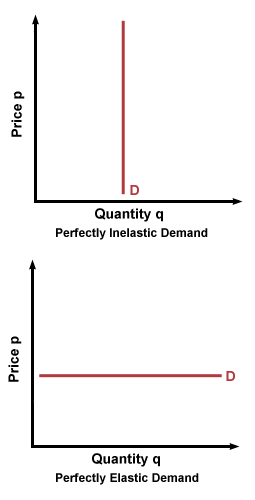What is Elasticity?
Elasticity refers to the degree of responsiveness in supply or demand in relation to changes in price. If a curve is more elastic, then small changes in price will cause large changes in quantity consumed. If a curve is less elastic, then it will take large changes in price to effect a change in quantity consumed. Graphically, elasticity can be represented by the appearance of the supply or demand curve. A more elastic curve will be horizontal, and a less elastic curve will tilt more vertically. When talking about elasticity, the term "flat" refers to curves that are horizontal; a "flatter" elastic curve is closer to perfectly horizontal.
Figure %: Elastic and Inelastic Curves

Figure %: Perfectly Elastic and Perfectly Inelastic Curves